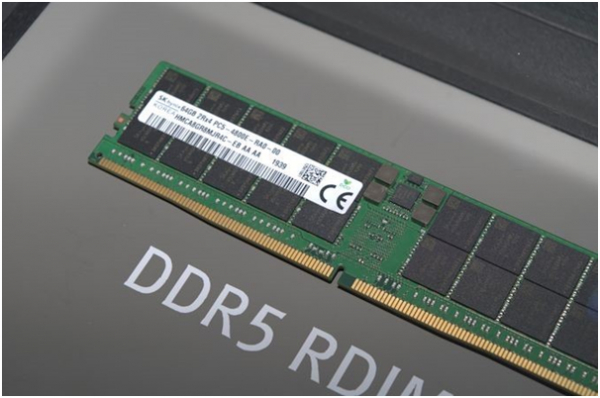
As another semiconductor super cycle is expected to kick off next year, semiconductor companies are intensifying efforts to get a bigger share of the market. In particular, competition for new technologies is intensifying in the memory semiconductor market.
Samsung Electronics is planning to launch DDR5 DRAMs in earnest in the second half of 2021. DDR5 DRAMs are a next-generation product with significantly faster transmission speeds and more capacity than the current market mainstay DDR4 DRAMs. They can transmit data at up to 6,400 Mbps, twice as fast as DDR4 DRAM’s 3,200 Mbps.
DDR5 DRAMs run with an operating voltage of 1.1 V, which marks a 9 percent reduction from 1.2 V of DDR4 chips. DDR5’s maximum capacity is 64 Gb, which is four times that of DDR4. DDR5 products are expected to help boost profitability of chipmakers as their unit price is higher than that of DDR4 DRAMs. The unit price of DDR4 DRAMs was 1.5 times higher than that of DDR3 DRAMs. DDR5 DRAMs are likely to be priced at a similar level.
Industry watchers say that Samsung Electronics may advance the release of DDR5 DRAMs as many experts forecast the arrival of another memory super cycle next year.
They note that SK Hynix released DDR5 DRAMs on Oct. 6 last year for the first time in the world.
DDR5 DRAMs’ share of the memory market is expected to grow rapidly. TrendForce, a market research company, predicted that DDR5’s share in the PC DRAM market will rise from less than 1 percent in 2020 to 10 percent in 2021. Analysts predicted that their share in the server DRAM market will increase from 4 percent in 2020 to 15 percent in 2021.
Chipmakers are also having fierce competition in the NAND flash market. They are racing to develop next-generation manufacturing processes ahead of rivals and making M&A deals to acquire new technologies.
Micron of the United States announced in November that it has started mass-producing 176-layer NAND flash memories for the first time in the world. The company said that the new 176-layer NAND product performs more than 35 percent better at reading and writing data, and its size decreased 30 percent compared to its best-in-class competitors.
SK Hynix also announced on Dec. 7 that it has developed a 176-layer 4D NAND flash in early December following Micron. SK Hynix emphasized that the 176-layer NAND will boost its price competitiveness as the new product enhances its productivity by more than 35 percent.
Samsung Electronics is also planning to release a seventh-generation V-NAND flash product in 2021. A seventh-generation V-NAND flash is theoretically capable of having up to 256 layers.
SK Hynix expanded its market share in the global NAND market to around 23 percent thanks to its acquisition of the NAND flash business from Intel in October last year. Samsung Electronics ranked first in the global NAND market with 33.8 percent as of the second quarter of 2020, said market research firm Omdia. Kioxia (formerly Toshiba) came in second with 17.3 percent, Western Digital third with 15 percent, Intel fourth with 11.5 percent and SK Hynix fifth with 11.4 percent.
Market experts predict that the NAND flash market will grow faster than the DRAM market. “NAND demand will grow at an average annual rate of about 30 to 35 percent by 2024 due to conversion to smartphone 5G and demand for SSDs for servers, and DRAMs will show an average annual growth rate of 15 to 20 percent, led by DRAMs for mobile devices and servers,” said an official of the semiconductor industry.